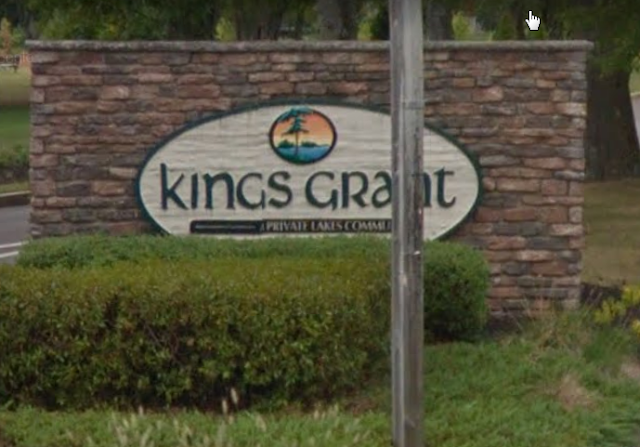
Back in September, I published a post summarizing an
article that appeared in the Courier Post in 1973, entitled ‘Evesham – And Suddenly
It’ll Be A City”. The article detailed how King's Grant stood in 1973. (There's a bunch of the original ads from King's Grant neighborhoods in the link above, if you missed it the first time).
What I didn’t realize is that the project actually began 5
years earlier. On October 23, 1968, exactly
50 years ago today, King’s Grant was officially approved at the Planning
Board. The plans were very different than
what was detailed in the 1973 article, and certainly very different from the
King’s Grant we know today. As I don’t
live there, I am not the best judge of whether the original plan design was
met, but it is interesting to look back at what was approved 50 years ago.
On April 4, 1968, a $200 Million dollar project was
submitted to the Evesham Township Planning Board. The project would be called King's Grant, as it was to be built upon land that was part of a grant issued by King James of England more than 350 years ago. The plan called for 9000 units, equally
divided between houses and apartments. (By
contrast, the 1973 article noted that the township approved 20,596 units.) The development would bring in $5 Million
dollars of tax revenue, and eventually $200M in ratables in 20 years.
In the April 1968 plan, King’s Grant included 600 acres of open space, including a golf course. “Some 37 natural or artificial lakes, stocked with fish and channeled for sailing for Kings Grant residents, will also be constructed, along with a creek system connected to the lakes for natural draining. Covered bridges, waterfalls, riding trails and existing pines would prevail."
In the April 1968 plan, King’s Grant included 600 acres of open space, including a golf course. “Some 37 natural or artificial lakes, stocked with fish and channeled for sailing for Kings Grant residents, will also be constructed, along with a creek system connected to the lakes for natural draining. Covered bridges, waterfalls, riding trails and existing pines would prevail."
"Because of the natural beauty, identification and prestige of such a development, [it] will bring new people of substantial means to this area" said the developer Philip S Setzer Company of Philadelphia.
By the time the plan was approved 6 months later, only 6 lakes
remained in the plan, some stocked for fishing and all with swimming and beaches.
Plans called for 6 shopping centers of 5-6 acres contained
in the development, one within walking distance of every residence. The residences would be divided into 25
neighborhoods. Apartments, including 3
high rise structures, would be in a village bounded by lagoons of land or
water. Where possible, homes and
apartments would look onto lakes.
Housing lots and apartment lots would not be back to back. The roads would be designed to discourage automobile traffic, and there would be no sidewalks, though there would be extensive nature trails. 120 miles of bridle and bicycle trails were planned.
There would be 5 acres set aside for municipal buildings.
There would be 5 acres set aside for municipal buildings.
At a public meeting on July 30, 1968, developers agreed to set
aside 154 acres for school sites for at least 15 years: six 12-acre sites for K-5 schools, plus 30-32
acres for a middle school if needed. 50
acres was set aside for a regional high school, which would be purchased by the
Lenape District if needed. Costs to
educate the children at the time was $388 per child per year, which was an
increase from 1965-66 of $320.
The final public hearing on the project was held on August 21, 1968, and the plan was approved by a 7-0 vote on October 23, 1968.
Residential construction began in 1973, along with a replica of a school that was used as a nature center. An article appeared in the Courier Post on November 9, 1973 titled "King's Grant is Nation's First Ecology-Protective New Town", which asked the question: "Is it possible to build a new community with 30,000 inhabitants on 2,500 acres of forest without destroying the ecosystem, specifically the water tables, soil and a thousand different species of plant, animal and bird life?"
Was King's Grant able to preserve its natural beauty? The developer imagined a place where "people walk instead of drive, where bird sounds beat out the sounds of traffic...where you can paddle across a lake for bread and milk, or ride bareback along a stream on your way to mail letters." The goal was to create "a town of 30,000 people and 30 million trees?" Did he succeed? I give you these pictures and let you decide.
 |
| Photo courtesy of Utley the Dog |
 |
| Photo Courtesy of Anne O'Neil |
 |
| Photo Courtesy of Anne O'Neil |
 |
| Photo Courtesy of Anne O'Neil |
 |
| Photo Courtesy of Anne O'Neil |
 |
| Photo Courtesy of Anne O'Neil |


List of Previous Blog Posts
Like my Facebook Page to get the latest posts - A View From Evesham. You can email me at MarltonNeil@yahoo.com.
Sources:
Courier Post 4/5/68, 6/22/68, 8/15/68, 10/24/68, 7/31/73, 9/21/73, 11/9/73
Philadelphia Inquirer 10/27/68
